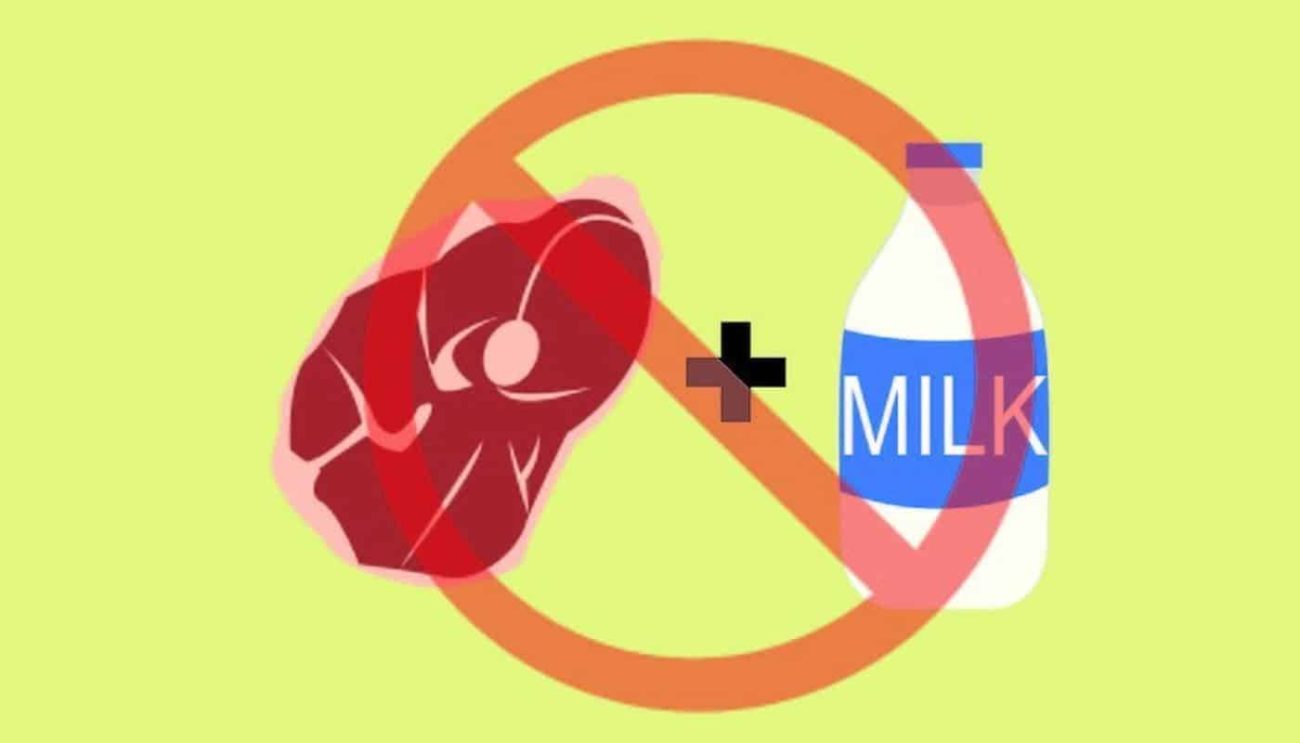1. Can I wash meat and dairy dishes at the same time in one dishwasher?
2. Non-dairy creamers are usually marked OU Dairy. Which one do I trust? Is it true that Kashrut requirements are more rigorous and that’s why it is marked dairy?
3. Can I rely on the list of ingredients to determine Kashrut status?
4. Can I change my minhag of waiting 6, 4, or 3 hours between meat and dairy to a shorter waiting period?
5. Can I use the same oven or microwave oven for dairy and meat?
Answers:
1. Yes, one can use the same dishwasher, even without removing leftovers from dishes. Potentially, there could be two problems with washing the dishes simultaneously: First, the Torah forbids cooking of meat and dairy together, and in high temperatures the leftovers are “cooked” together. Second, there is a concern about the flavor of meat absorbed in the dairy dishes and vice versa. However, cooking meat and dairy together is forbidden only when it is for the purpose of eating, but when it is a by-product of the cleaning process and it is going to be trashed there is no problem. If you wish, you can remove the leftovers before washing. The second problem, that of transferred flavor, does not apply in the modern kitchen, except for earthenware dishes (to see the full article on Koshering dishes in the modern kitchen ).
2. Non-dairy creamers are exactly what they are advertised to be: non-dairy. Federal regulations are much more rigorous than Kashrut requirements, and there is an inherent risk for manufacturers in mislabeling dairy as non-dairy, the risk of lawsuits and heavy fines by the FDA. The OU marks those creamers as dairy because they contain some milk derivatives such as lactic acid or sodium caseinate. However, these derivatives have been processed to the point where they become non-edible, and thus lost their status as food, when they are added later to any food they do not change its status to dairy. For a full list of ingredients and their Kashrut status, see Rabbi Yitzhak Abadi’s excellent website ).
3. You can rely on the list of ingredients which appears on the package. Contrary to popular belief, ALL ingredients must be listed, even those which are less than 2%. The difference between those and other ingredients is that they are listed in descending order of percentage, but the ingredients which form less than 2% of the product are listed in random order to protect the product’s formula.
4. Yes, you can change Minhag if you find it necessary to wait less than what you are used to. I have discussed the question of changing a minhag in regards to eating legumes on Pesah and have presented the sources (for the full article ). The main factors for allowing people to follow a Minhag other than their family’s or master’s is the globalization trend, this specific minhag being a private and not a public one, and the evidence that it has evolved in Medieval Times, so one is allowed to reclaim an ancient Minhag.
5. According to the measurements provided in the Shulhan Arukh, all our home ovens are big enough to allow a simultaneous use of meat and dairy, as long as the contents do not splatter, so it would be better to have one of the dishes covered for simultaneous use. If one is not using the oven for both at the same time, there is no concern at all, and dishes can be put in the oven one after the other without a waiting period between them. Microwave oven can be used, not simultaneously, for dairy and meat, but it is always advisable to cover the dishes, not only for Kashrut purposes. (if you decide to Kosher the microwave oven by boiling a cup of water, make sure to add a wooden stirrer, since water heated by microwaves can explode out of the cup and cause burns – just be safe).








Ohr HaChaim Yomi – Emor